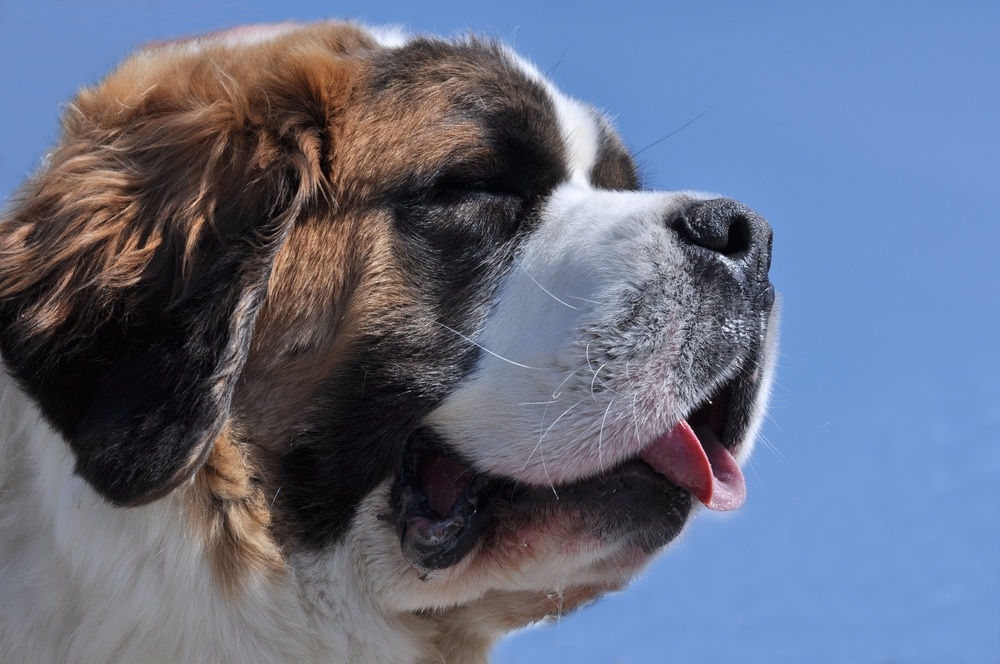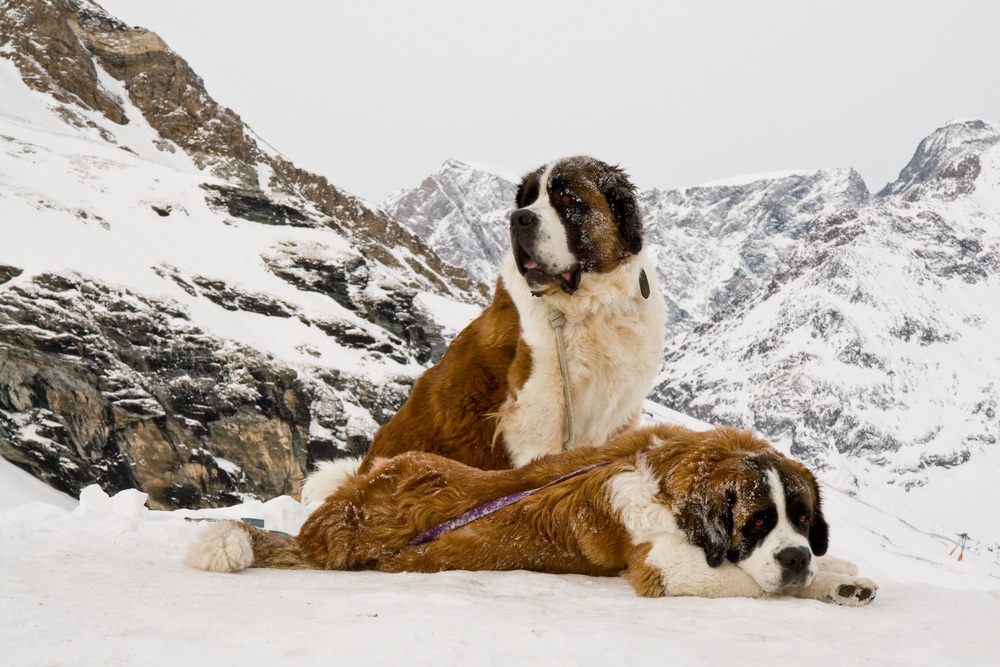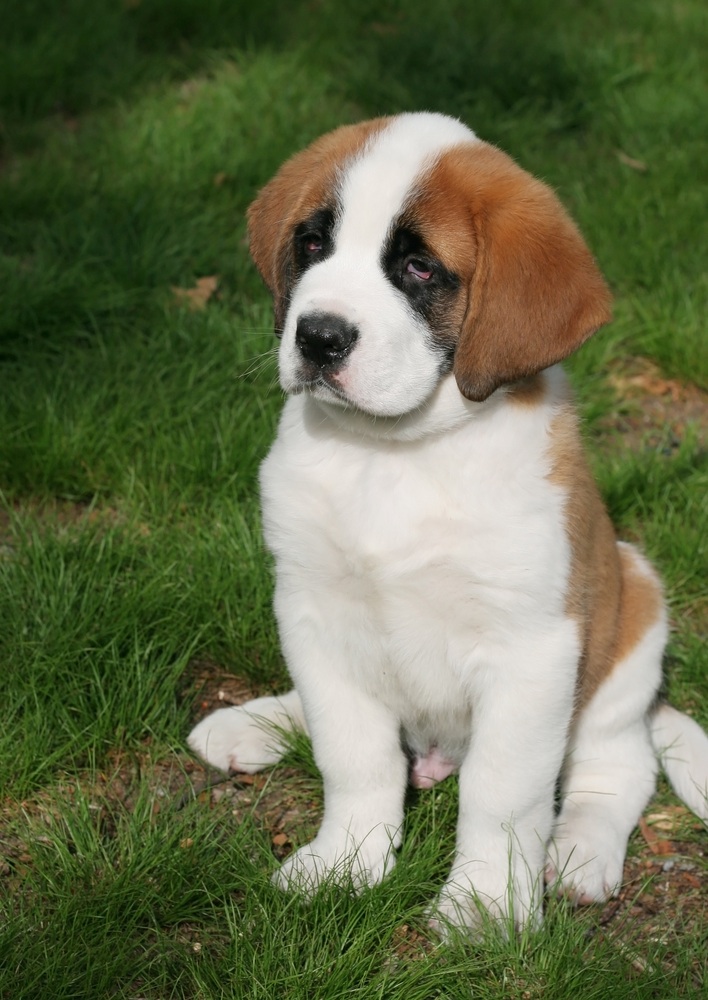St. Bernard

A gentle giant of the dog world, the St. Bernard is best-known for its mountain rescue work, although there is little if any truth in the story that they carried flasks of brandy around their necks to revive those who they rescued. This idea stems from a painting of the breed dating from 1820 by the famous Victorian artist, Sir Edwin Landseer.
Its origins can be traced back centuries to Switzerland. Here, the St Gotthard’s pass in the Swiss Alps, close to the Italian border has been a popular route for travellers for thousands of years, long before St. Bernard de Menthon established a hospice there in 1049.
Originally, these large, powerful dogs were kept to guard the monks, but over the years, they began to accompany them on their rescue missions, to assist stranded travellers trapped by blizzards in this region. The most famous of all St. Bernards was a dog called Barry, who, in the early 1800s, is credited with saving over 40 lives.

During 1856, however, tragedy struck and the breed nearly died out, when firstly an avalanche engulfed the kennels at the hospice, and then many of the surviving dogs died as the result of an outbreak of distemper.
Other large working breeds, such as the Newfoundland, were subsequently used to safeguard the St. Bernard’s future, with the monks being careful to maintain the characteristics of the original breed as far as possible.
St. Bernard puppy

Only smooth-coated examples of the breed were favoured for rescue work, because the snow would blow off their coats easily and did not weigh them down. Those puppies in litters with longer coats were found homes in the valley. The breed first became known as the St. Bernard, being named after the founder of the hospice, when these massive mastiff-type dogs were first brought to Britain during the 1860s.
zzz
Today’s St. Bernards stand at least 65cm (26in) tall at the shoulder, and can weigh over 91kg (200lb), displaying correspondingly large appetites. They are red and white in colour, with black shading evident on the head as well. In common with most large breeds, St. Bernards sadly have a relatively short lifespan, which is unlikely to exceed 10 years.
Factbox
Grooming needs: Medium - easier in smooth-coated dogs.
Ease of training: Medium.
Health concerns: Avoid over-exercising puppies. Can be susceptible to eyelid problems (ectropion/entropion), and vulnerable to bone cancer (osteosarcoma), as well as hip dysplasia (HD), causing lameness. Breeding stock should be screened for HD.
Best suited to: Fit owners with large homes, who are prepared to put up with drooling over furniture and can control what is a very powerful breed on a lead.
Did you know?
The breed is credited with saving Manchester United, the famous English football club, from bankruptcy in the early 1900s. The club’s captain took his St. Bernard to a fund-raising event, where a wealthy brewer offered to buy the dog, but ended up buying the club instead, paying off its debts!